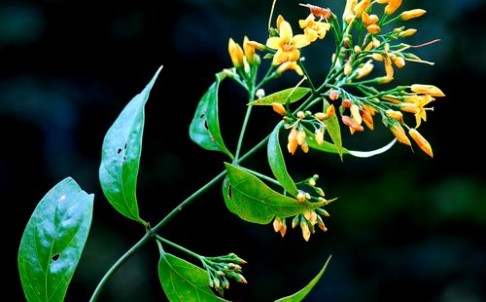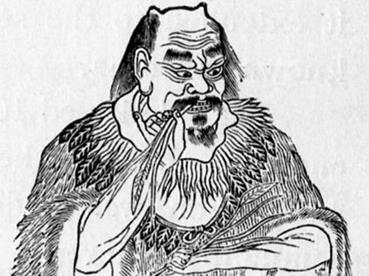

Gelsemium elegans, the most deadly of three varieties of the flowering plant, is indigenous to Asia. Photo: SCMP Pictures
A deadly herb native to China has been found to contain chemical compounds that may kill cancerous cells more effectively than some currently available medicines, according to a new study.
Chinese scientists discovered nine new compounds in Gelsemium elegans (断肠草), the most poisonous indigenous plant in the country, during their study in subtropical Yunnan province. It is the most toxic of three versions of the flowering plant. The other two are native to North America.
Even miniscule doses of two of the compounds, dubbed No. 1 and No. 7, wiped out tumor cells linked to leukaemia and cancer of the liver, lungs, breast and colon, the team said.
They reported the results in the latest issue of the journal Natural Products, which is published by the American Chemical Society.
"The results are encouraging," said Professor Xu Youkai, lead scientist of the study. Xu works at the province’s Xishuangbanna Tropical Botanical Garden, which operates under the Chinese Academy of Sciences.
 |
| One of many depictions of Shennong, the Chinese deity known as the master of herbal remedies. Photo: SCMP Pictures |
For years, it has been used in China as a folk medicine to treat rheumatism, skin diseases like psoriasis, and even malignant tumours.
But due to its toxicity, the plant, which resembles honeysuckle due to its yellowish flowers, also served as the chief ingredient of a poisonous potion in the country in bygone centuries. Gelsemium is known in Putonghua as "gut melting grass," and also as "heartbreak grass".
According to local legend, the indigenous plant is so fast-acting that even Shennong, a Chinese deity famous for his knowledge of herbal remedies and cures for all poisons, died after ingesting it before he could reach into his medicine bag.
It is known to destroy the neurons in the body’s spinal cord, leaving victims breathless and in enormous pain. It typically damages a number of internal organs and can cause convulsions, paralysis, and death.
Previous case studies in Yunnan and other Chinese provinces over the last few decades show that people who consumed honey containing traces of it were dead within hours.

Chinese scientists have found several chemical compounds in the plant that they say can kill cancer cells. Photo: SCMP Pictures
Since the 1930s, the unique effect of this deadly grass on the central nervous system has intrigued researchers. The latest discovery follows decades of research by mainland Chinese scientists, Xu said.
Previous studies unlocked some of its secrets, such as its ability to relieve pain in a manner similar to morphine, but without the resulting addiction.
Xu said it could become a safe and beneficial herbal medicine if more government funding is secured.
But years of animal and clinical trials would be required before it can be safely administered to cancer and other patients, he added.
"Sometimes the treasure is hidden in the most dangerous place," Xu said. "We have to be bold." (South China Morning Post)

86-10-68597521 (day)
86-10-68597289 (night)

86-10-68511095 (day)
86-10-68512458 (night)

cas_en@cas.cn

52 Sanlihe Rd., Xicheng District,
Beijing, China (100864)

